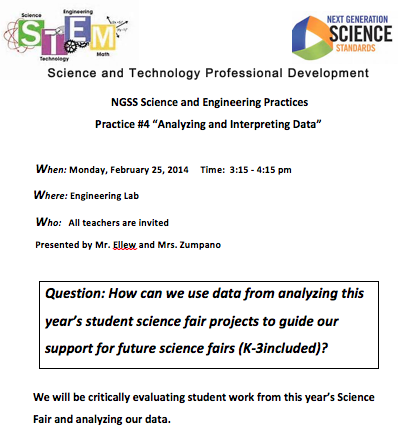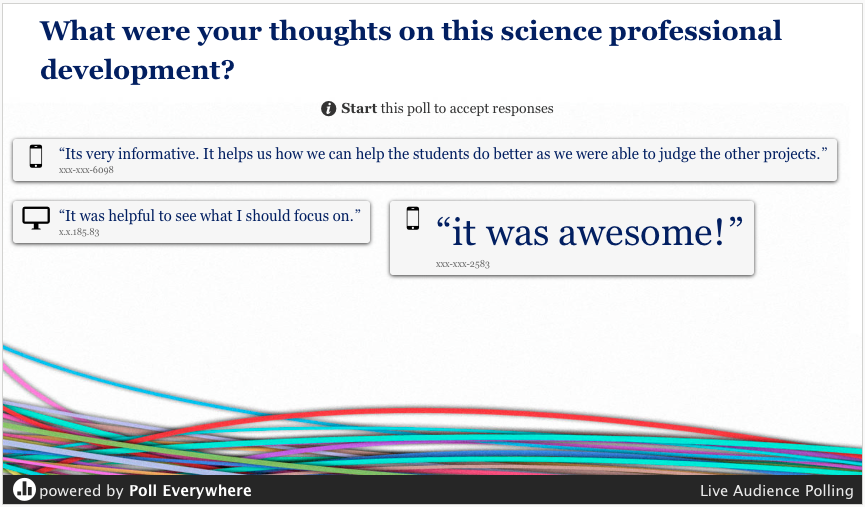A STEM Lesson for Teachers
Setting the Scene
This year Leland became one of Chicago Public Schools' STEM schools. The designation brought about additional support staff placed in the building to help build the capacity of the teachers and help move the STEM initiative forward. Our school has a STEM Technology Specialist (me!) and a STEM Math and Science Specialist- my partner, Tom. It's great having a colleague to bounce ideas off of. Since we are housed in the same "closet" we have a lot of time to communicate and talk about ways to grow the school and our faculty. We are a great team and support each other's specialties.One day after the middle school science fair we talked about how our science boards had a long way to go. Being a Welcoming School (merging 3 student bodies and different teachers from across the district along with a new administration) has had it's challenges. The science fair was one of them. We talked about the need to express to the teachers where the boards fell short so next year we could come out even stronger. In this discussion however, it became clear that it wouldn't be as helpful if we were to simply give the teachers a list of items to work on with students. We felt that if the teachers had a chance to dissect and analyze different science boards they might come to these conclusions on their own. Hence, a professional development opportunity was born.
Science and Technology
 As the technology specialist I focused on the different types of delivery methods we would be using for the session that involved technology while Tom focused on the content. I created a Prezi that would guide our activities and keep us on task.
As the technology specialist I focused on the different types of delivery methods we would be using for the session that involved technology while Tom focused on the content. I created a Prezi that would guide our activities and keep us on task.
We began our professional development by doing a science "warm up". Participants were asked a couple of questions that dealt with reading charts and graphs and making inferences about the data. This helped to introduce the NGSS Science and Engineering Practice we would be focusing on: Practice #4: Analyzing and Interpreting Data. Teachers then had time to judge 4 science fair boards using the same rubric as the original judges of our science fair. When this was complete, participants were asked to fill in their rubric scores in a Google Form. This allowed us to then see a quick summary of all the scores.
Viewing the results of the Google Form was important because as you can see in the screenshot above there were 3 different scores for the same component. This allowed us to start a dialog about what each person noticed and why they gave the board the score they did. It also showed Tom and me that not all teachers are on the same page in terms of what constitutes a quality science fair board so we know what else we need to focus on as specialists. As the conversation continued I was able to go into the Prezi I created and add the responses from the audience as we discussed the results.

To wrap up we used one more technology tool: PollEverywhere. This live audience polling service allows you to gather feedback from your audience as you are presenting. There are different types of polls to choose from. I asked participants to use the "open ended" response system which allowed them to text their answer in using a phone with texting capabilities (responses can also be sent via Twitter or a direct URL link). We had a small group of teachers that were able to join us today but the lesson was a success and will help us strengthen our science fair all the more next year.








Comments
Post a Comment